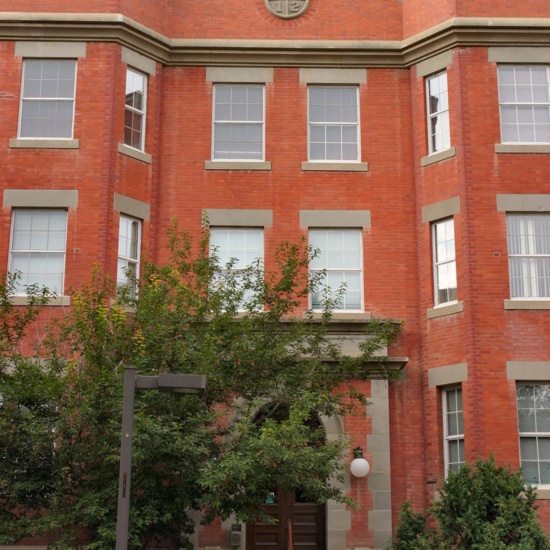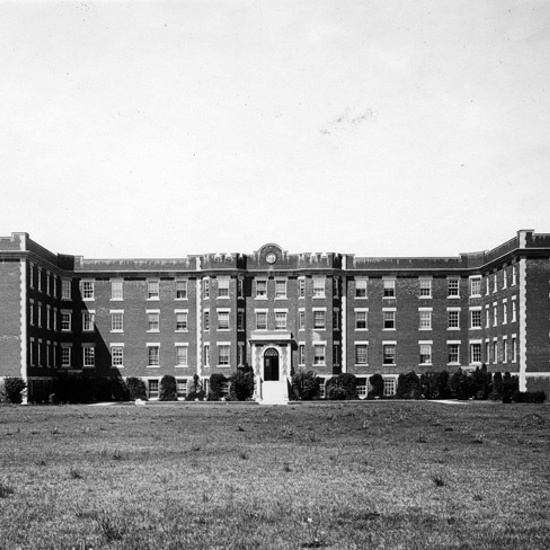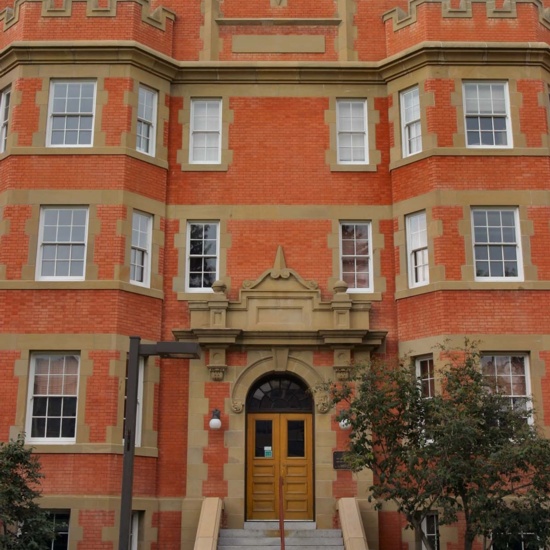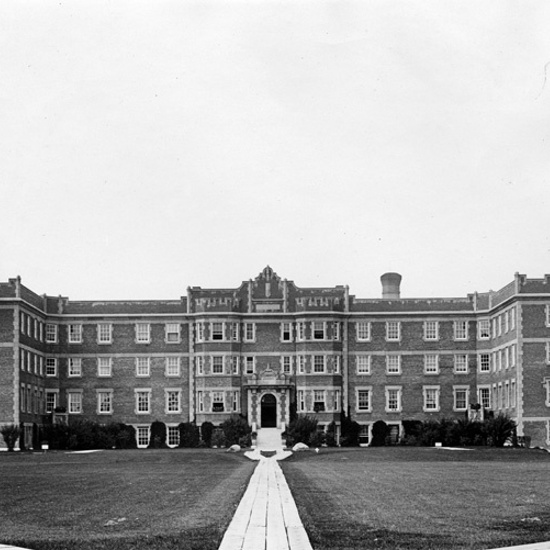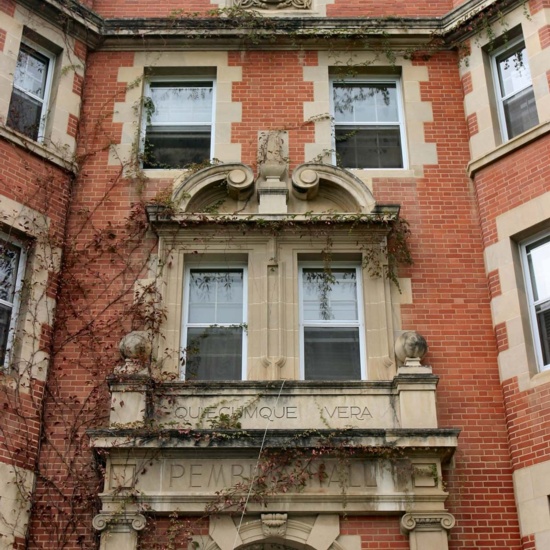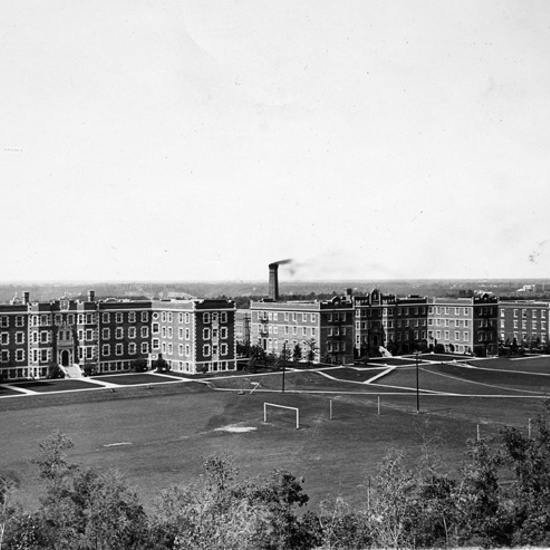Athabasca, Assiniboia and Pembina Halls
These three Collegiate Gothic buildings are an important fixture on the University of Alberta campus.
These three Collegiate Gothic buildings are an important fixture on the University of Alberta campus.
When the University of Alberta was originally envisioned, a plan for the campus was developed by Percy Nobbs and George Hyde of Montreal. The entire plan never came to pass, but the first three university buildings on the campus were influenced by the Collegiate Gothic style. Athabasca Hall was completed in 1911, followed by the virtually identical Assiniboia Hall in 1912. Both were designed by Allen Jeffers, then chief architect of Alberta Public Works. Pembina Hall was added in 1914, designed in a similar style by Cecil Scott Burgess, the university’s professor of architecture.
The buildings are constructed mainly of brick with sandstone around the windows and doors and also the stone quoins on the corners. The entrances are recessed arches surrounded by stone moldings. The windows are narrow and contain multiple panes of glass with wooden dividers. The buildings have interesting details such as buttresses and step gables on the front face and relief sculptures. They are also topped off with flat, battlement parapets enhanced with finials. Pembina was the only building constructed using a steel and concrete structure.
Originally the buildings contained the offices of the President, Registrar and Bursar in addition to lecture rooms, laboratories and a library. Students lived in the residence wings with separate areas for men, women, and married couples. Some staff also took up residence in a separate corridor although still under the same roof. In 1915, with the opening of the Arts Building, the halls were transformed entirely to student housing, Pembina being exclusively a women’s residence.
The buildings served as student residences until a growing demand for housing resulted in the new Lister Hall. Beginning in 1962, Athabasca Hall and Pembina Hall became residences for senior undergraduate and graduate students, whereas Assiniboia Hall was converted into office space. Plans were made to demolish the buildings and replace them with a graduate housing complex, but due to strong opposition, the halls were saved and upgraded. In 1976, Athabasca and Assiniboia Halls received steel and concrete frames to replace the original wood ones. Pembina was used as a residence until 2003 but now serves as the Faculty of Native Studies offices, with a Cree Tipi situated out front to permanently mark the space. All three buildings now serve as faculty and staff offices.
Details
Type
Educational
Designation Status
No Historic Recognition
Neighbourhood
Time Period
Year Built
Between 1911 and 1914
Architects
Architectural Styles
Character Defining Elements
Brick cladding , Brick structure , C shaped footprint , Capstone/Copestone , Carving , Crenellated parapet , Dripstone , Flat roof , Irregular footprint , Keystone , Pilaster , Smooth stone , Three storeys or more
